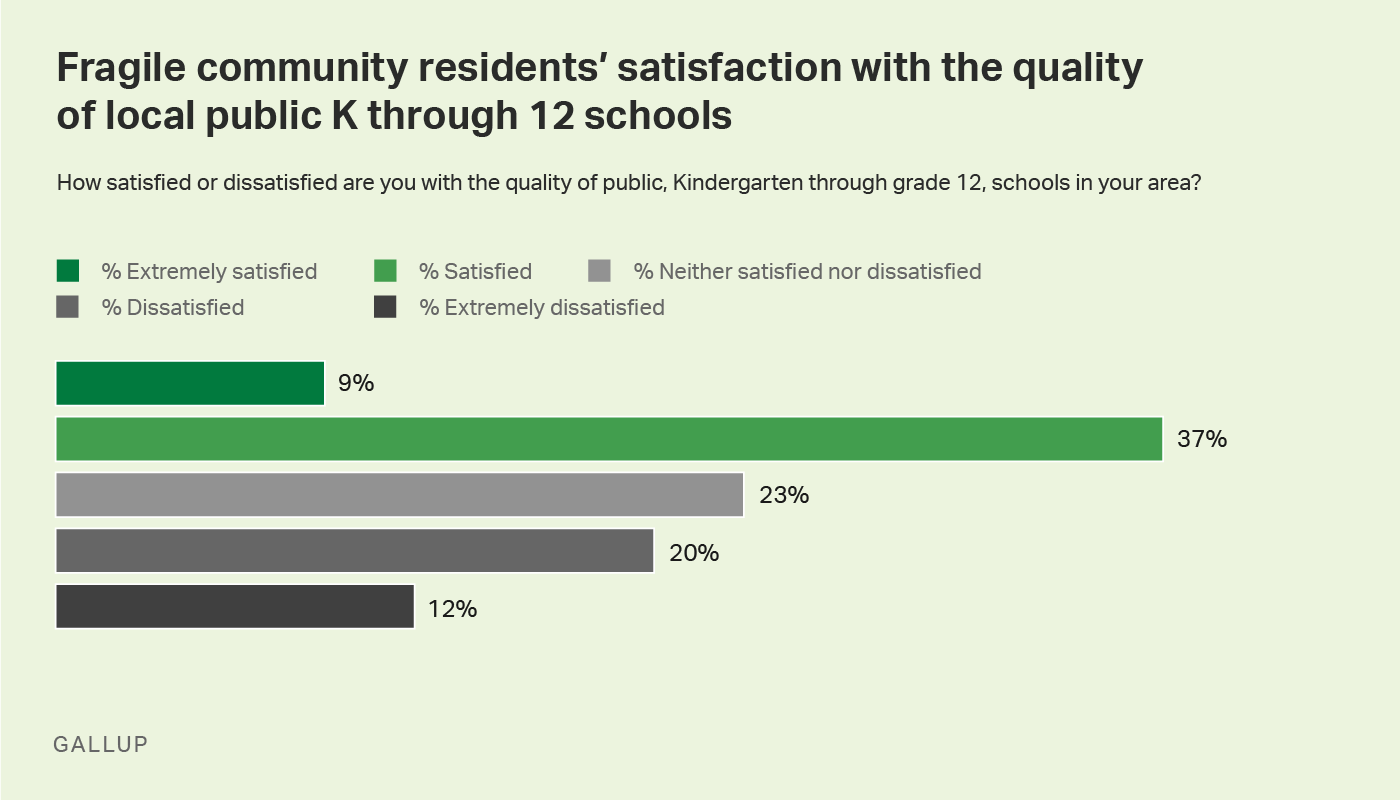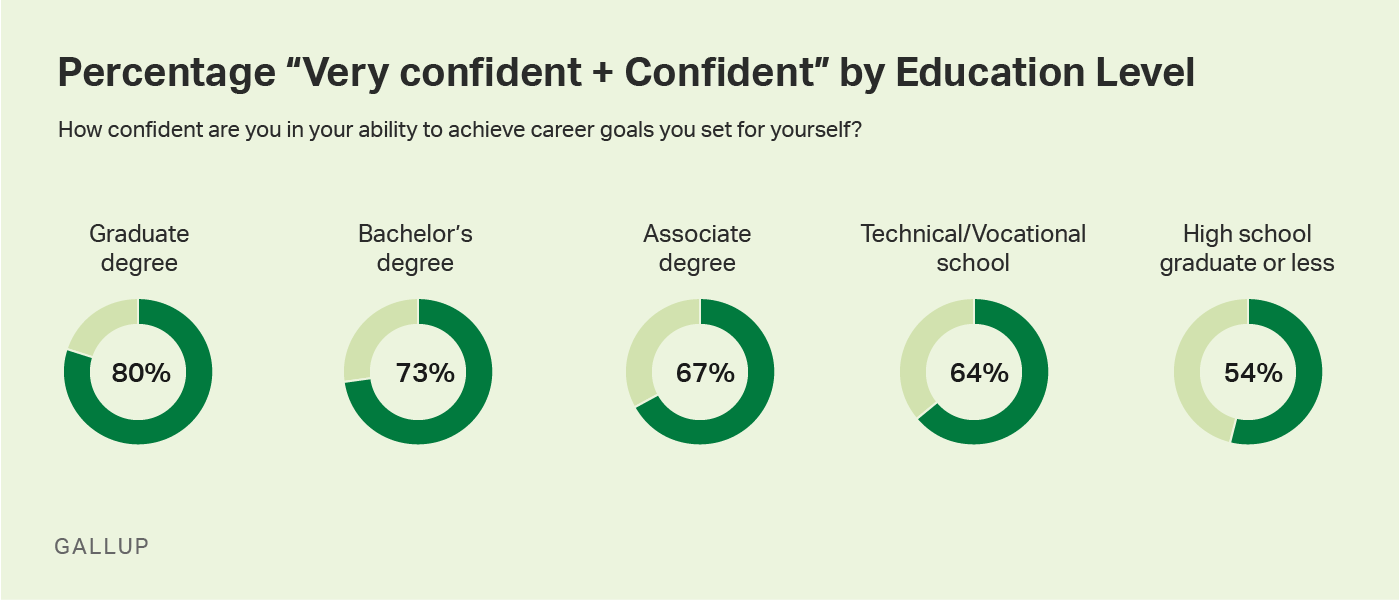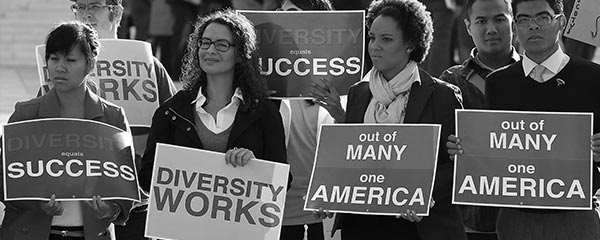Story Highlights
- 35% of residents say all local children can access high-quality schools
- Nearly half of residents are satisfied with the quality of local schools
- Residents' education level linked to confidence in career goal achievement
WASHINGTON, D.C. -- Residents of America's fragile communities -- defined as areas with concentrated poverty and limited access to opportunity -- are split on whether all children have access to high-quality public schools. About one-third of residents agree or strongly agree (35%) all children in their area have access to high quality public schools; nearly as many, 33%, disagree or strongly disagree. The remaining 32% are neutral on the question or have no opinion.
These findings are from the 2019 State of Opportunity in America report, based on the second annual survey of fragile communities conducted by The Center for Advancing Opportunity (CAO) and Gallup. The study focuses on a range of indicators gauging residents' perceptions of K-12 and postsecondary education.
Fragile community residents' perceptions about access to high-quality public schools are slightly more positive today than in the first study conducted in 2017. At that time, 32% of all fragile community residents agreed or strongly agreed that children in their area have access to high-quality public schools, whereas 38% disagreed or strongly disagreed.
The 2018 study also finds whites and blacks in fragile communities holding different perspectives on schools.
- By 38% to 29%, more whites agree than disagree that children in their area have access to high-quality public schools.
- On the other hand, just 29% of blacks agree with this statement, while 39% disagree. In fact, blacks are twice as likely as whites, 25% vs. 12%, to strongly disagree.
- The views of Hispanics are similar to whites in fragile communities, as more Hispanics agree or strongly agree (39%) that all children in their area have access to high-quality public schools than disagree or strongly disagree (30%).

Parents' Satisfaction With Public Schools
Fragile community residents with children under 18 years old in the household responded to an item gauging their level of satisfaction with public schools in their area. Nearly half of parents with school-aged children are satisfied or extremely satisfied (46%) with the quality of public schools in their area; 32% are dissatisfied or extremely dissatisfied. Similar to the variance seen in perceptions of the quality of community college programs among fragile community residents, the CAO/Gallup study finds that perceptions about the quality of K through 12 public schools vary substantially by community.
Among fragile community residents in Birmingham and Chicago, just 32% and 35%, respectively, are satisfied or extremely satisfied with the quality of public schools. More than four in 10 of Fresno residents are satisfied or extremely satisfied (44%). Residents of fragile communities in Appalachia have more favorable perceptions of the public schools in their area with 65% at least satisfied with the public schools.

Relationship Between Education and Optimism
The relationship between education and the optimism America's fragile community residents have about their lives is evident in the CAO study. Fragile community residents give an average response of 7.6 when asked to predict how their life will be in five years on a zero-to-10 scale. However, average future life ratings are significantly higher among those with an associate degree (7.8), bachelor's degree (7.9) or graduate degree (8.1) than among those with a high school education or less (7.5), suggesting that education attainment is one vital component for promoting wellbeing equality in the U.S.
Additionally, confidence in their ability to achieve career goals trends upward with fragile community residents' education level. Those with any form of higher education -- including vocational training or a two-year associate degree -- are more likely than those who finished their education with a high school degree or less to say they are "very confident" or "confident" in their ability to achieve career goals they set for themselves. While more than half (54%) of fragile community residents with a high school diploma or less education are confident or very confident, the proportion is nearly twenty percentage points higher (73%) for those with a bachelor's degree.

Implications
Access to high-quality K through 12 education is a critical building block for a positive life trajectory for students. While economic and educational challenges disproportionately impact fragile communities, the CAO study reinforces that residents of these communities are not without hope. When students are able to complete education beyond high school, they have more optimism about their future lives and greater confidence and they can set and achieve their goals.
The State of Opportunity in America report includes the voices of fragile community residents to assist leaders in ensuring that all students have access to high-quality educational opportunities, so they may be prepared for both work and life. Access the complete 2019 report and learn more about CAO's Center for Educational Opportunity.




